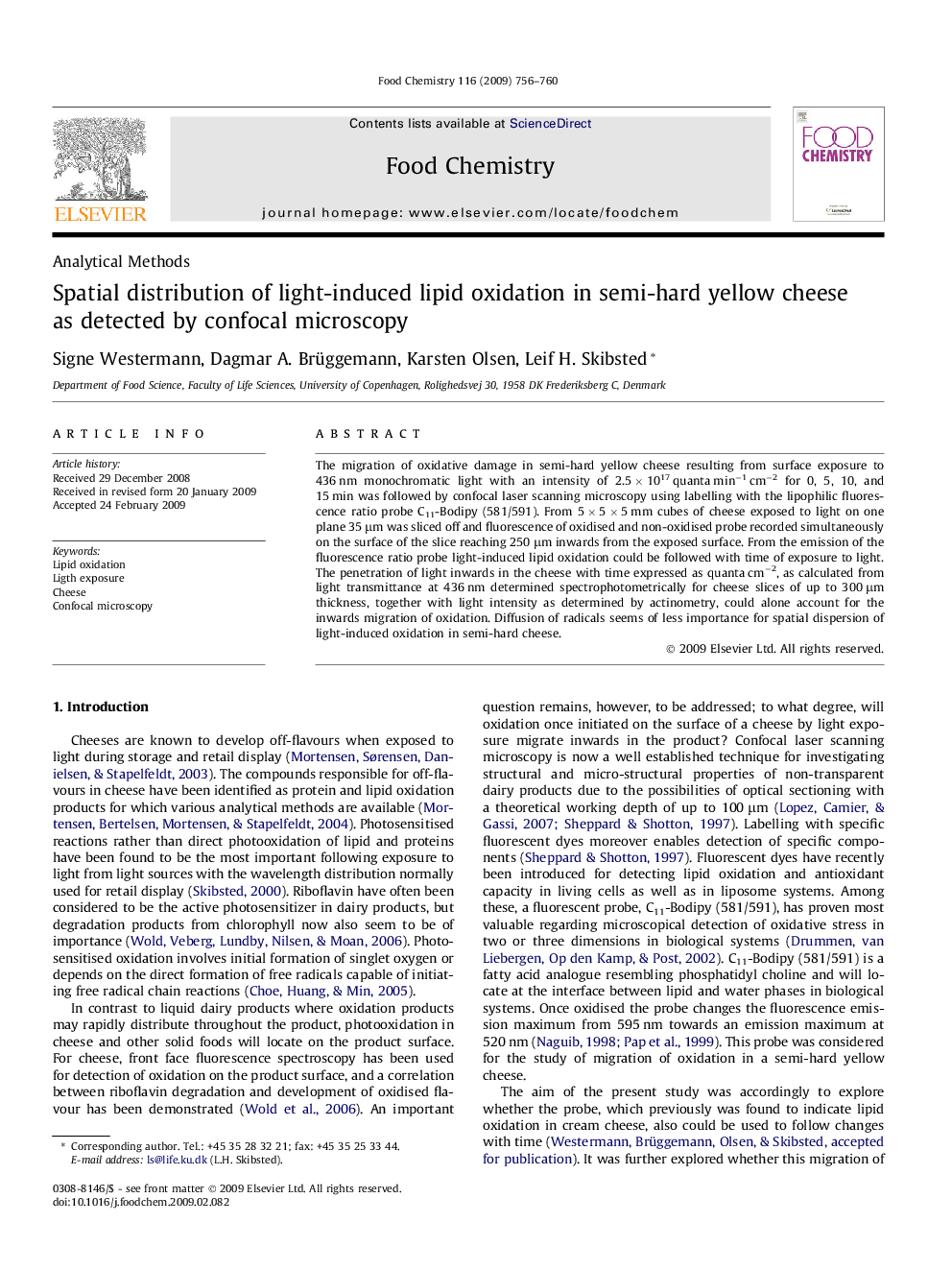| Article ID | Journal | Published Year | Pages | File Type |
|---|---|---|---|---|
| 1185958 | Food Chemistry | 2009 | 5 Pages |
Abstract
The migration of oxidative damage in semi-hard yellow cheese resulting from surface exposure to 436 nm monochromatic light with an intensity of 2.5 Ã 1017 quanta minâ1 cmâ2 for 0, 5, 10, and 15 min was followed by confocal laser scanning microscopy using labelling with the lipophilic fluorescence ratio probe C11-Bodipy (581/591). From 5 Ã 5 Ã 5 mm cubes of cheese exposed to light on one plane 35 μm was sliced off and fluorescence of oxidised and non-oxidised probe recorded simultaneously on the surface of the slice reaching 250 μm inwards from the exposed surface. From the emission of the fluorescence ratio probe light-induced lipid oxidation could be followed with time of exposure to light. The penetration of light inwards in the cheese with time expressed as quanta cmâ2, as calculated from light transmittance at 436 nm determined spectrophotometrically for cheese slices of up to 300 μm thickness, together with light intensity as determined by actinometry, could alone account for the inwards migration of oxidation. Diffusion of radicals seems of less importance for spatial dispersion of light-induced oxidation in semi-hard cheese.
Related Topics
Physical Sciences and Engineering
Chemistry
Analytical Chemistry
Authors
Signe Westermann, Dagmar A. Brüggemann, Karsten Olsen, Leif H. Skibsted,
